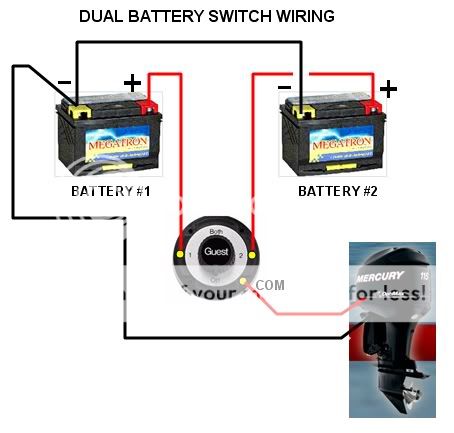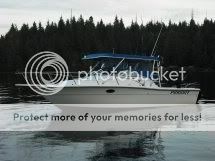TheBigGuy
Well-Known Member
In recently bought a new to me boat and am doing some wiring upgrades. It came with a 2006 115HP merc 4 stroke and a 9.9 4 stroke manual start kicker. I swapped in a 1991 Honda 15hp electric start long shaft that has always worked flawlessly for me. It charges at 6 amps which I know is a little lower power than preferred, but better than no charging and no electric start. The boat is wired for only one charging source, with a 1-2-all-off switch. Main motor is started from battery 1 - starting battery, Battery 2 is deep cycle - house battery with electronics-downriggers connected to it.
Below is a diagram of the current wiring configuration:

How do you suggest wiring in the power cables for the charge/start feed to the kicker. I am not really interested in getting into any more complicated setups. I don't want to add an auto charge relay (ACR) or a solenoid/isolator circuit. I just want to keep things simple. I was simply planning on adding the cables to the second battery. The motors may run for brief periods together while one or the other is warming up. I don't think this is a big issue if only for brief periods.
How would you suggest wiring up this configuration with two charge circuits from the motors with a single battery selector switch.
Thanks in advance for any suggestions.
Below is a diagram of the current wiring configuration:

How do you suggest wiring in the power cables for the charge/start feed to the kicker. I am not really interested in getting into any more complicated setups. I don't want to add an auto charge relay (ACR) or a solenoid/isolator circuit. I just want to keep things simple. I was simply planning on adding the cables to the second battery. The motors may run for brief periods together while one or the other is warming up. I don't think this is a big issue if only for brief periods.
How would you suggest wiring up this configuration with two charge circuits from the motors with a single battery selector switch.
Thanks in advance for any suggestions.



